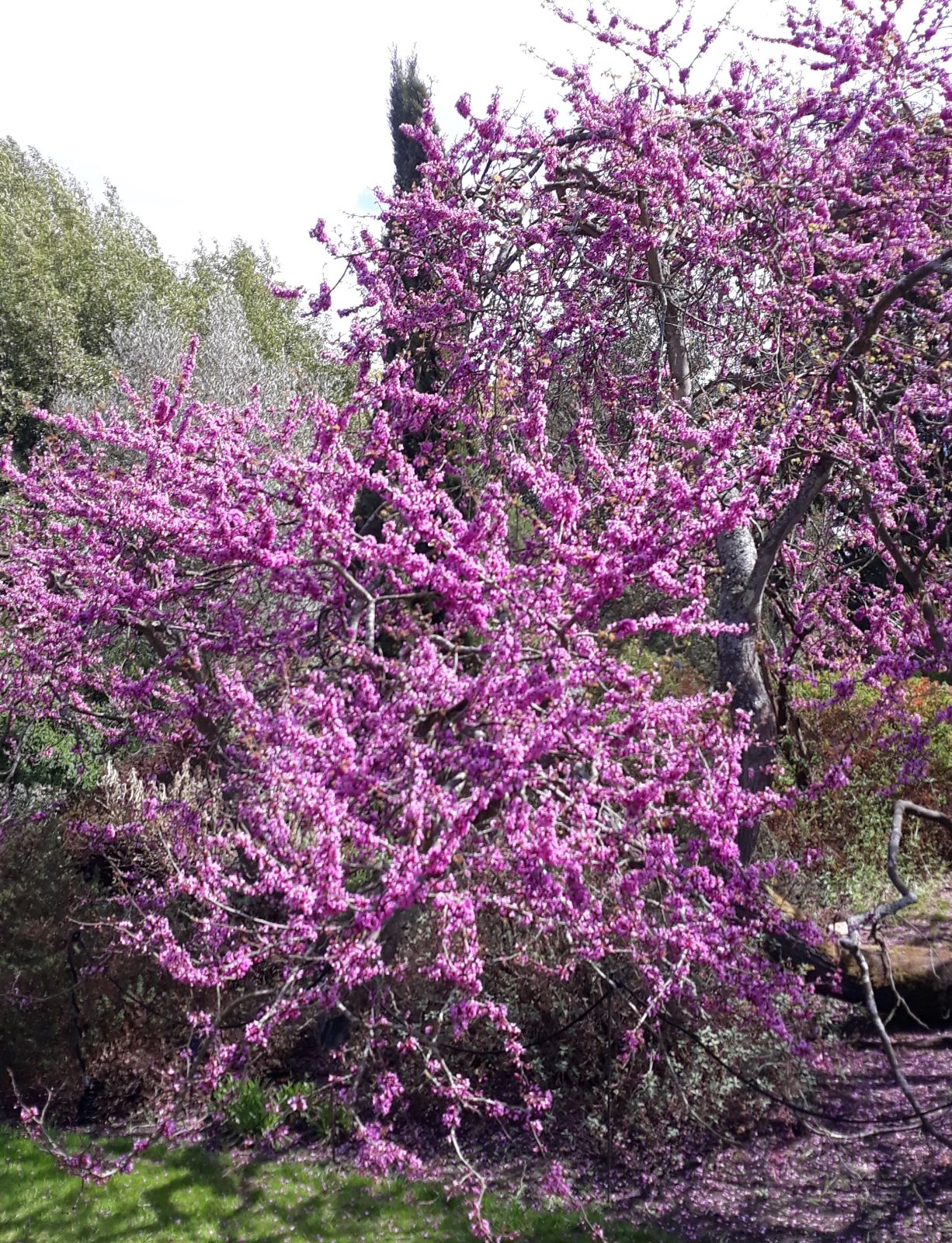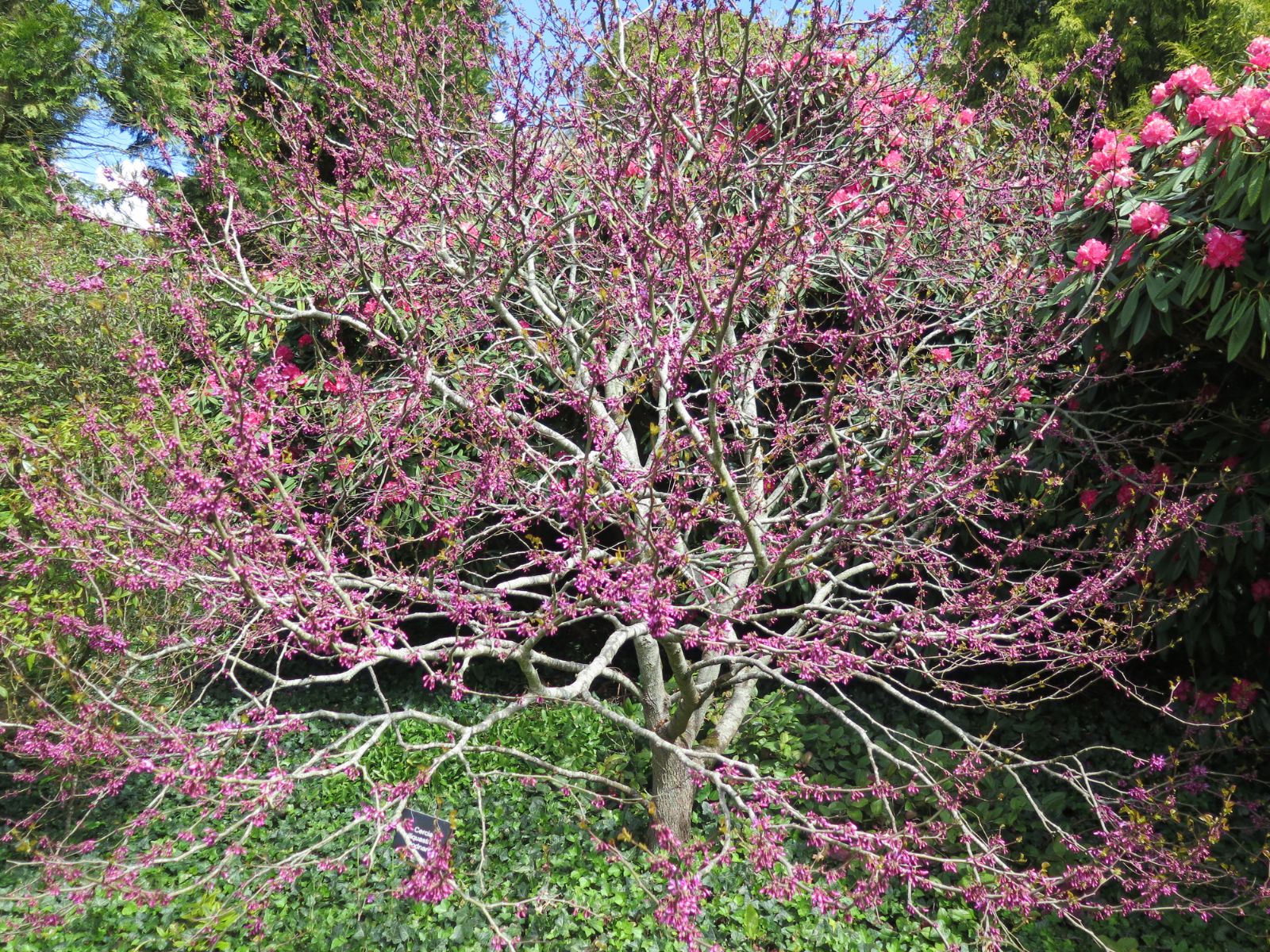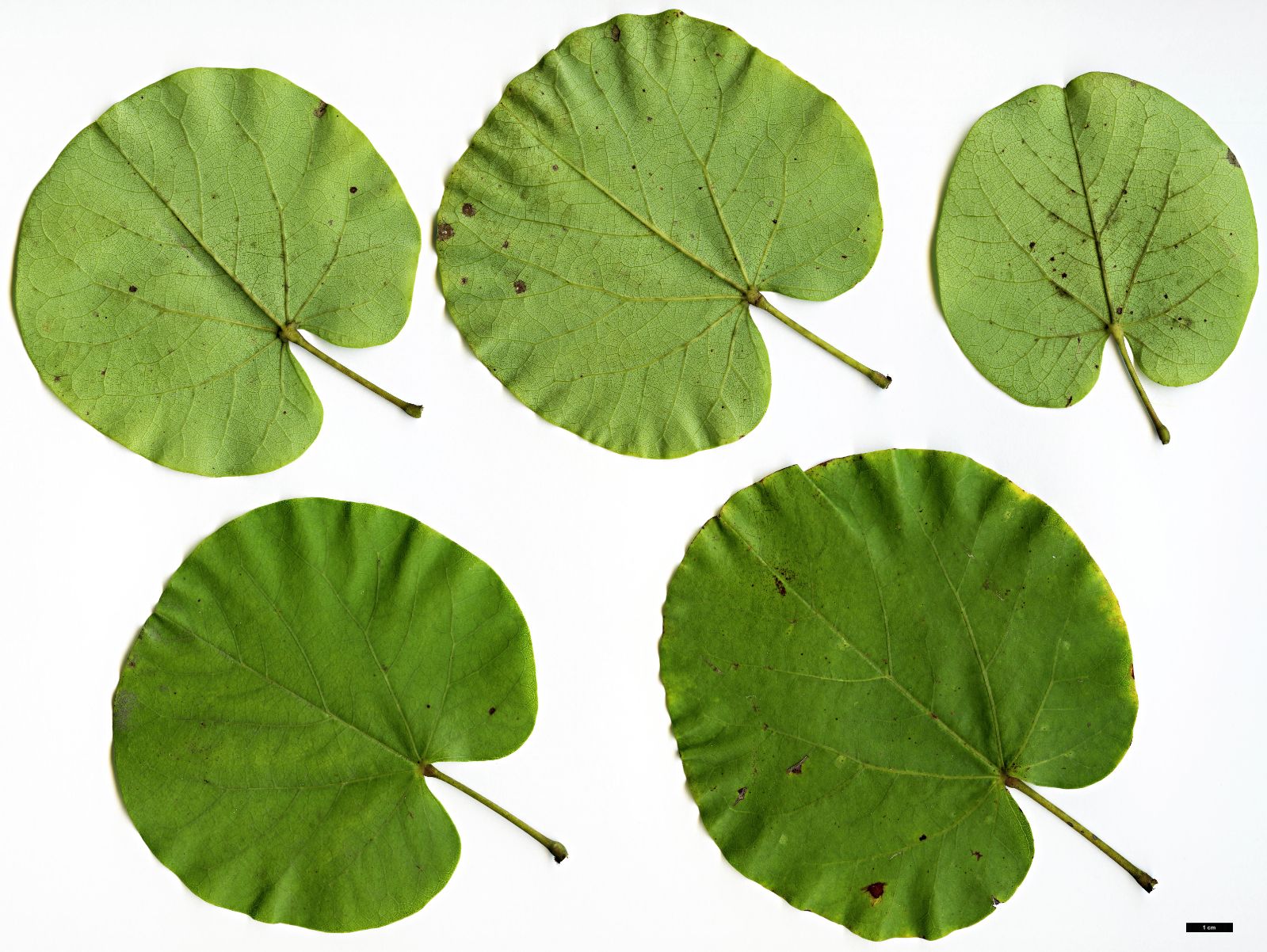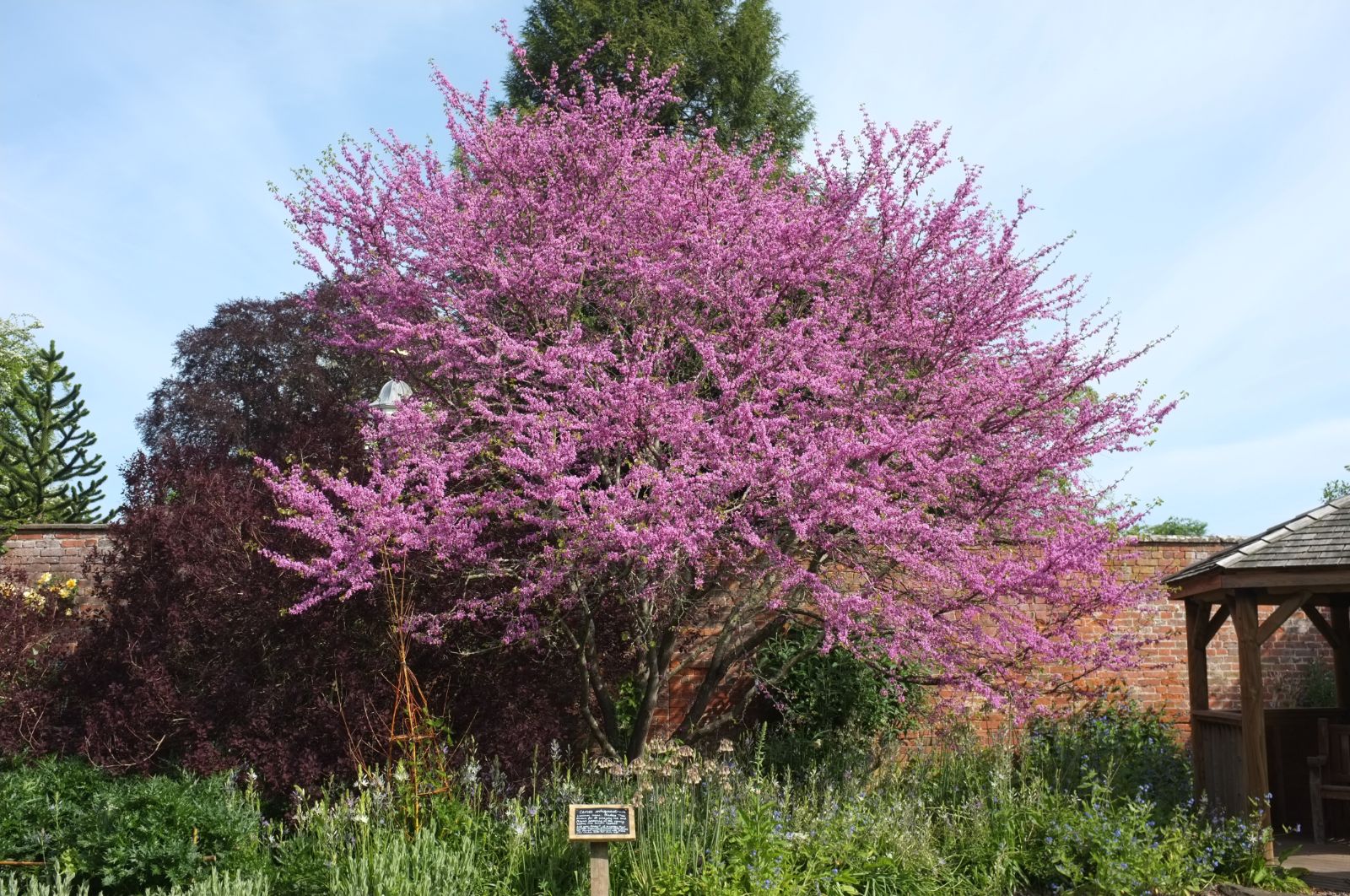Cercis siliquastrum
Credits
Article from Bean's Trees and Shrubs Hardy in the British Isles
Recommended citation
'Cercis siliquastrum' from the website Trees and Shrubs Online (treesandshrubsonline.
Genus
Common Names
- Judas-tree
A deciduous tree, usually of low, bushy habit, and below 25 ft in height, but occasionally forming a distinct trunk and reaching from 30 to 40 ft high; branchlets glabrous. Leaves roundish, with a heart-shaped base, sometimes pointed, but usually broad and rounded at the apex; from 21⁄2 to 4 in. across, somewhat less in length; they are quite glabrous, and of a well-marked glaucous green. Flowers produced in clusters from the joints of the old wood (even on the trunk of old trees), each flower on a slender stalk about 3⁄4 in. long; they are bright purplish rose, and 1⁄2 to 3⁄4 in long. Pod 3 to 5 in. long, 5⁄8 in. wide, flat, thin, red, eight- to twelve-seeded, remaining on the plants throughout the winter. Bot. Mag., t. 1138.
Native of the East Mediterranean region and the Near East, probably not found in a wild state west of Dalmatia and Istria; known and cultivated in England for more than three hundred years. In Italy it is the most delightful tree flowering in April and May; with us, flowering a few weeks later, it is also one of the most beautiful and picturesque trees that can be found in gardens. It flowers in the leafless state, and the profusion of blossom gives at a distance the effect of a rosy-purple mist. A sun-loving tree, it is better suited for the south of England than the north. Nowhere does it thrive better than in the gardens of Cambridge. It should only be propagated from seeds which, although they do not come to perfection regularly in this country, can be easily and cheaply purchased. The popular name of ‘Judas-tree’ is derived from the legend that this was the tree upon which Judas went out and hanged himself after the great Betrayal. The largest tree at Kew was 40 ft high, with a trunk 4 ft 9 in. in girth. The flowers of the Judas-tree have a sweetish, acid taste, and are used as an ingredient in salads. They open in May.
The tree varies in the depth of shade of the flowers; Miller knew a form with flesh-coloured flowers. One with deeply coloured flowers was given the F.C.C. in 1944 when shown from Bodnant; the original tree there was planted in 1876 and is about 30 ft high. In f. alba (West.) Rehd., the flowers are white.
From the Supplement (Vol. V)
It should have been mentioned that the Judas-tree thrives in chalky soils.
The Bodnant form (FCC 1944) has been propagated and is in commerce as ‘Bodnant’. The flowers are reddish purple (RHS Colour Chart 74B). The white-flowered form received an Award of Merit when shown from the Wellcome Foundation, Langley Court, Kent, where there is a tree about 30 ft high.
With regard to the popular name for this species, Judas-tree, it has been suggested that the name was originally ‘tree of Judaea’, because it was common in the Judaean hills south of Jerusalem (and elsewhere in the Near East). However, it seems hardly likely that a species common in southern Europe should have come to be associated with this area. A more likely explanation is that it was seen to grow in the place where, according to tradition, Judas hanged himself, in which case the association may date from the period of the Christian Kingdom of Jerusalem (1099–1187), or might even have its origin in the literature or traditions of the Eastern Orthodox Church. The name Judas-tree was also applied to the common elder, Sambucus nigra.
† C. griffithii Boiss. – A much-branched, sometimes prostrate shrub, or a small tree with a spreading crown. It is not quite clear what difference, apart from habit, justifies its separation from C. siliquastrum, but it is said to have smaller pods with a broader wing along the flat upper suture and with fewer seeds. A native of Iran and Afghanistan, north into Russian Central Asia, where the flowers are stated to be violet-purple. The plant at Kew, twiggy, and about 2 ft high in 1984, was raised from seeds collected by Grey-Wilson and Phillips in Afghanistan in 1973.










